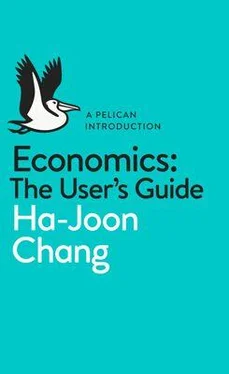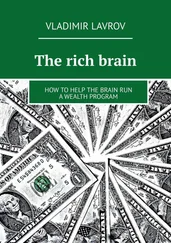Bruce Hood - The Domesticated Brain - A Pelican Introduction (Pelican Books)
Здесь есть возможность читать онлайн «Bruce Hood - The Domesticated Brain - A Pelican Introduction (Pelican Books)» весь текст электронной книги совершенно бесплатно (целиком полную версию без сокращений). В некоторых случаях можно слушать аудио, скачать через торрент в формате fb2 и присутствует краткое содержание. Год выпуска: 2014, ISBN: 2014, Издательство: Penguin Books Ltd, Жанр: Старинная литература, на английском языке. Описание произведения, (предисловие) а так же отзывы посетителей доступны на портале библиотеки ЛибКат.
- Название:The Domesticated Brain: A Pelican Introduction (Pelican Books)
- Автор:
- Издательство:Penguin Books Ltd
- Жанр:
- Год:2014
- ISBN:9780141974873
- Рейтинг книги:4 / 5. Голосов: 1
-
Избранное:Добавить в избранное
- Отзывы:
-
Ваша оценка:
- 80
- 1
- 2
- 3
- 4
- 5
The Domesticated Brain: A Pelican Introduction (Pelican Books): краткое содержание, описание и аннотация
Предлагаем к чтению аннотацию, описание, краткое содержание или предисловие (зависит от того, что написал сам автор книги «The Domesticated Brain: A Pelican Introduction (Pelican Books)»). Если вы не нашли необходимую информацию о книге — напишите в комментариях, мы постараемся отыскать её.
The Domesticated Brain: A Pelican Introduction (Pelican Books) — читать онлайн бесплатно полную книгу (весь текст) целиком
Ниже представлен текст книги, разбитый по страницам. Система сохранения места последней прочитанной страницы, позволяет с удобством читать онлайн бесплатно книгу «The Domesticated Brain: A Pelican Introduction (Pelican Books)», без необходимости каждый раз заново искать на чём Вы остановились. Поставьте закладку, и сможете в любой момент перейти на страницу, на которой закончили чтение.
Интервал:
Закладка:
Learning to fight or flee
To understand how aversive unpredictable environments affect growing brains, we need to understand the normal response mechanisms to stress. When faced with a threat, we can either stand up to it or run away. There is a rapid fight-or-flight response where we get that sudden emotional rush that requires us to mobilize as quickly as possible that is triggered by activity in the limbic system of the brain. This preparedness is achieved by a system called the hypothalamic-pituitary-adrenal ( HPA ) axis .
Following exposure to stress, the hypothalamus releases two hormones, corticotropin-releasing hormone (CRH) and arginine vasopressin (AVP), that stimulate the nearby pituitary gland to release adrenocorticotrophic hormone (ACTH) into the blood stream. ACTH targets the adrenal glands that sit atop the kidneys way down in the guts to release adrenaline, noradrenaline and cortisol. The balance of adrenaline and noradrenaline regulates the autonomic nervous system (ANS), which in turn increases breathing, heart rate, sweating and pupil dilation, and shuts down digestion. After all, you don’t have time to chew the cud when you are about to do battle. If you have ever felt butterflies in your stomach before going on stage, that was your ANS operating. Cortisol works by increasing the concentration of glucose in the bloodstream, thereby making more fuel available for muscles. All of this activity is fine when there is a real threat that needs to be dealt with immediately. However, the fight-or-flight response has to be wielded appropriately and used in moderation.

Figure 6: The hypothalamic-pituitary-adrenal (HPA) axis
Maintaining high levels of stress over long periods leads to chronic impairment in our ability to cope with life’s ups and downs. It is like keeping your foot on the accelerator pedal, revving the engine, and it will eventually cause damage to the HPA axis mechanisms and subsequent illness and impairment of your immune system. Chronic stress has also been linked to psychiatric disorders such as depression, with most individuals suffering from major depression having increased HPA activity. 22So, to keep body and mind in a healthy state, you need to be able to regulate your stress response. Part of this regulation is provided by the hippocampus. Within the hippocampus, there are glucocorticoid receptors (GR) that monitor levels of glucose and cortisol in the bloodstream. When levels of circulating glucose and cortisol reach a critical level, the hippocampus signals the hypothalamus to shut down the HPA process in the same way that a thermostat on a heater regulates temperature. If a thermostat is faulty, the house freezes or overheats. Likewise, if the HPA is disrupted, either you do not respond adequately to stress or you overreact.
Children raised in abusive households suffer not only from episodes of violence and harm but also from the unpredictability of when the next abuse will happen. Unpredictability is corrosive to coping, as we are not able to relax but must maintain our stress response in a state of high alert. This will produce long-term disruption of the HPA system, which can have consequences many years later. This may be one reason why PTSD sufferers have abnormal patterns of circulating cortisol, because their HPA remains on high alert and is unable to relax. 23In a study reminiscent of Bowlby’s original work, Finnish scientists followed up 282 children evacuated during World War II to test the effects of separation from parents on their stress responses decades later. Those separated from their parents during the war as young children had higher cortisol reactivity to stress tests sixty years after the early separation, indicating that the physiology of their HPA system had been altered permanently by this experience. 24The older the child was at the time of the evacuation, the more resilient they were and the less disruption to their HPA system as adults.
Even before you are born, stress can alter the functioning of the HPA axis. Female rhesus monkeys in the later stages of pregnancy were taken from their cages and exposed to unpredictable, loud, stress-inducing noise. After giving birth, not only did these young mothers have disrupted HPA responses, but so did their offspring, in comparison to other mothers who had not been stressed during pregnancy or their infants. 25In the same way, experiencing a terrifying, unpredictable event like the attack on the World Trade Center in which no one knew what was going on, some pregnant mothers may have inadvertently passed on a legacy of fear to their unborn children.
Once born, the long-lasting effects of early exposure to stressful households have been shown to alter the way babies respond to aggression even when they are not awake. 26Infants between six and twelve months of age had their brains scanned when they were asleep inside an fMRI scanner. They were played nonsense sentences spoken in very angry, mildly angry, happy and neutral tones of voice by a male adult. Even though they were unconscious, those babies from households where there were high levels of conflict showed greater reactivity to the very angry voice in the ACC, caudate, thalamus and hypothalamus – all brain regions of the HPA system. Already their stress response had become sensitized to the presence of aggression.
The HPA system is also altered in animals that become domesticated. As we saw earlier, domestication produces changes in behaviour and the brain. Domesticated animals are less fearful, less aggressive and have elevated levels of serotonin 27– a neurotransmitter associated with prosocial activity. 28Normally wild fox pups become fearful of humans at around forty-five days and are less likely to explore their environments as their natural fight-or-flight response kicks in. In contrast, this fearful response is not observed in domesticated pups of the same age and they continue to explore their environments. For domesticated foxes, the period of socialization is significantly longer and play activity extends into adulthood. 29
Don’t feel nervous, feel excited!
The relationship between body and mind is critical to understanding emotion. One of the first accounts of this relationship was William James’s proposal that emotions were produced by the body’s response to a stressful encounter. 30When we see a bear, our fight-or-flight response immediately kicks in to deal with the threat and only afterwards do we feel the emotion of fear. That’s the way it should be, as a good evolutionary strategy, because it is better to act first and ask questions later when you are in potential danger. James argued that we needed to react before we had time to ponder the situation. You don’t want to be sitting around considering how you feel about the bear.
Most of us rarely encounter bears in the modern world, but we have all had that act-now, think-later experience. Maybe it was a sudden fright when someone jumped out at you or possibly an unexpected threat. Our heart rate and breathing surges as adrenaline pumps around our body in preparation. Road rage is a classic aggression scenario triggered by a perceived threat before we have had time to evaluate the actual threat.
James’s account of emotions following responses failed to take into consideration situations where the body responds more slowly to stressful situations than our thought processes. 31Also, people are not always sensitive to the changes in their body in stressful situations. Sometimes emotions can precede bodily changes, which is why we can feel embarrassment before we blush. Maybe you burped in public accidentally, looked around at others and then felt your cheeks burning bright red with heat as the emotional significance of your faux pas sunk in. The thought was almost immediate but the change in blood flow took longer. So which is it? Does fleeing cause fear or do we run away because we are frightened?
Читать дальшеИнтервал:
Закладка:
Похожие книги на «The Domesticated Brain: A Pelican Introduction (Pelican Books)»
Представляем Вашему вниманию похожие книги на «The Domesticated Brain: A Pelican Introduction (Pelican Books)» списком для выбора. Мы отобрали схожую по названию и смыслу литературу в надежде предоставить читателям больше вариантов отыскать новые, интересные, ещё непрочитанные произведения.
Обсуждение, отзывы о книге «The Domesticated Brain: A Pelican Introduction (Pelican Books)» и просто собственные мнения читателей. Оставьте ваши комментарии, напишите, что Вы думаете о произведении, его смысле или главных героях. Укажите что конкретно понравилось, а что нет, и почему Вы так считаете.











